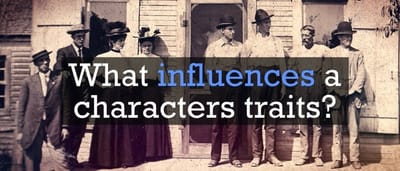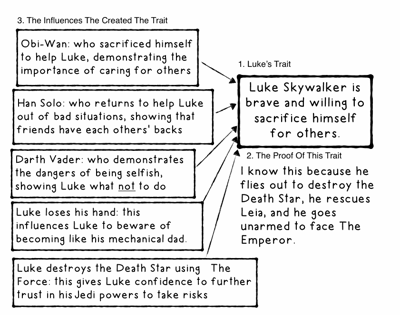
Photo by Chain 12
One way to add depth to character analysis is to look beyond characters’ traits to include what has influenced them to have those traits.
Character’s influences could include:
- People: parents, friends, teachers, religious leaders
- Media: books, movies, music, comics, games
- Experiences: a trip, a disaster, seeing a concert
Scaffold
When we ask students to go deeper, it’s essential to build scaffolding that leads to student success.
Rather than beginning with the complex idea of influences, start with the simpler approach of identifying characters’ traits.
Then, once students have identified a character’s traits, we can ask: who or what influenced this character to behave this way?
This kind of information is rarely on the surface, so give students some time to make these inferences.
Model It
Naturally, we always model the process for students first. Pick a character that your students are familiar with to dig into. This character could be from a story you’ve already read or someone from popular culture that your class knows about.
I’ll pick Luke Skywalker from Star Wars.
Luke is brave and willing to sacrifice himself for others. This trait is influenced by:
- Obi-Wan: who sacrificed himself to help Luke, demonstrating the importance of caring for others
- Han Solo: who returns to help Luke out of sticky situations, showing Luke that friends have each others’ backs
- Darth Vader: who demonstrates the dangers of being selfish, showing Luke what not to do
- Luke loses his hand: this influences Luke to beware of becoming like his mechanical father
- Luke destroys the Death Star using The Force: this gives Luke confidence to further trust in his Jedi powers to take risks
There’s a mix of people and events in this case.
You might create a graphic organizer like this to display the information (sorta a multi-flow map, if you’re familiar with Thinking Maps):
- Start by identifying the trait
- Then give evidence from the story, proving the character’s trait
- Then identify who or what influenced the trait
Connect To Self
This has the wonderful bonus of connecting to students’ own lives. We can ask them about the people, media, and events that have influenced their own traits.
This could be a fun year-opener as students explain their most-essential influences.
Naturally, start with yourself:
- I enjoyed telling my students that, even as a grown man, I still fear disappointing my Japanese grandma.
- My 6th graders influenced me to keep trying new things out of fear of becoming outdated!
- The Dune series of books influenced me to think about long-term consequences.
- My master teacher, Nanci Cole, influenced my teaching by demonstrating creative, differentiated lessons
- My teaching colleagues showed me the importance of understanding students as people
Hope this becomes an interesting way to learn about your students while also taking character analysis to a deeper level. Let me know how it goes: ian@byrdseed.com!

